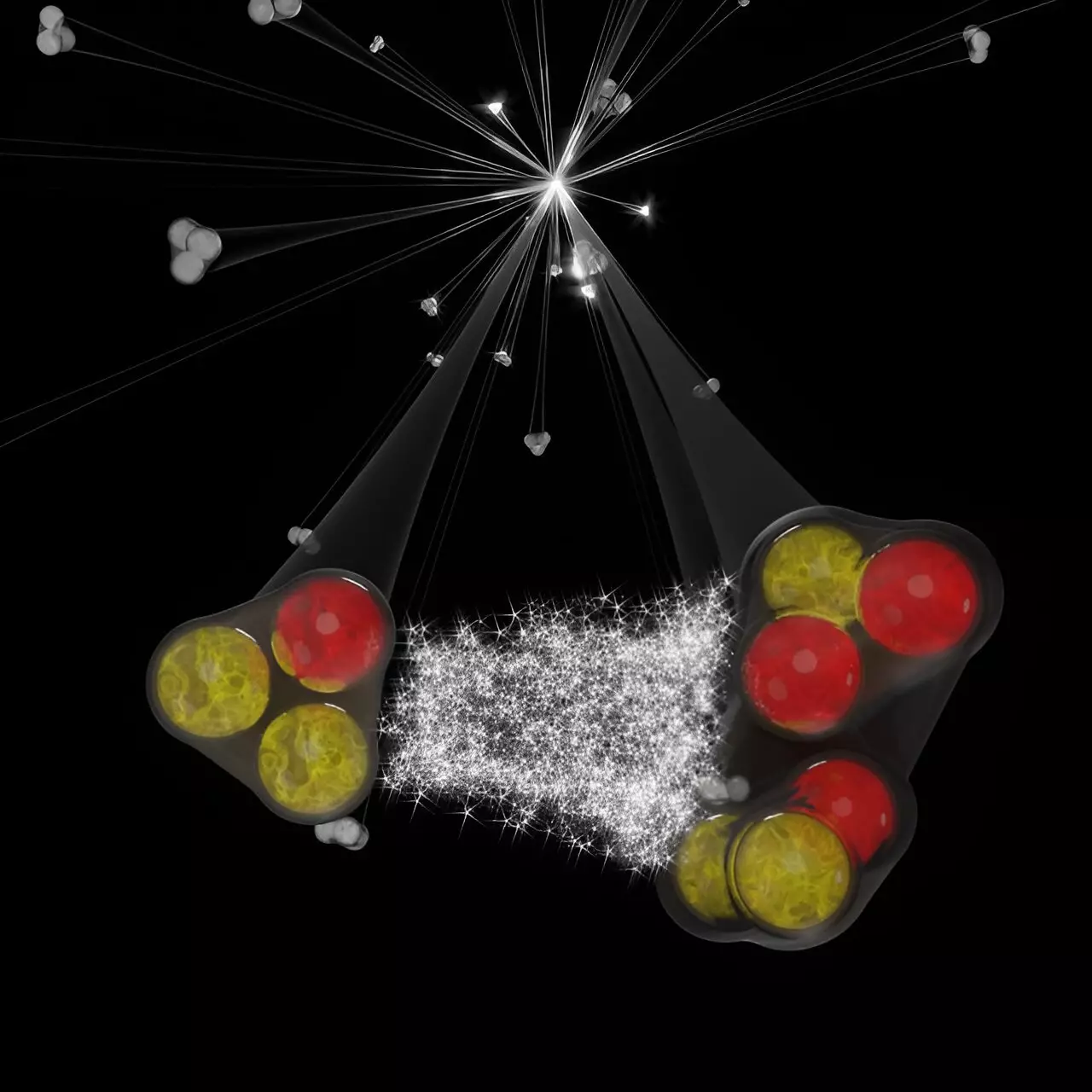The ALICE collaboration’s recent study, published in *Physical Review X*, delves into the intricate dynamics of three-body interactions in nuclear physics, particularly focusing on kaon-deuteron and proton-deuteron systems. This research not only advances our understanding of fundamental forces within nuclear matter but also highlights the challenges of extending theoretical models to multi-body systems.
Understanding Three-Body Interactions
Fundamental forces in physics are typically considered as interactions between pairs of particles. However, the situation becomes significantly more complex when dealing with three-body systems. These interactions are crucial for understanding various phenomena in modern nuclear physics, including the structure of atomic nuclei and the properties of nuclear matter under extreme conditions, such as those found in neutron stars. The ALICE study aims to illuminate these three-body interactions, which have remained challenging to characterize due to their non-trivial nature.
Recent advances in high-energy experiments, particularly those carried out at the Large Hadron Collider (LHC), have made it possible to explore such interactions through proton-proton collisions. These collisions produce a myriad of particles within femtometer-scale distances (approximately 10^-15 meters), prompting questions about the interactions of closely produced particles before they diverge into broader trajectories. The investigation of correlations among particles produced in these high-energy events is instrumental in discerning the nature of their interactions.
The Experimental Framework and Methodology
Employing sophisticated particle identification techniques, the ALICE collaboration scrutinizes high-multiplicity proton-proton collision data at an impressive center-of-mass energy of 13 TeV. The collaboration has devised a correlation function that gauges how the likelihood of locating two particles with specific momentum relationships diverges from the expected behavior under the assumption of independence. In cases devoid of correlation, this function should yield a value of one, while values significantly deviating from this benchmark provide insight into the nature of the forces at play.
In the case of kaon-deuteron systems, the results reveal a tendency towards repulsion at low relative transverse momenta, indicated by correlation values falling below unity. This observation suggests repulsive interactions that could alter our understanding of particle dynamics in high-energy scenarios.
The findings from the correlation studies present fascinating implications regarding the spatial relationships between deuterons and associated particles like kaons or protons. The observed relative distances of approximately 2 femtometers indicate a close interaction region, essential for comprehending the forces exerted during the fleeting moments of particle production.
While the correlation in the kaon-deuteron discloses a well-understood relationship via a two-body effective model involving Coulomb and strong interactions, the corresponding proton-deuteron correlations reveal a different narrative. The inadequacy of the two-body model in this context calls for more sophisticated three-body calculations that can include the detailed structure of the deuteron. This necessity not only underscores the intricacies of nuclear interactions but also advances the discussion on how to improve theoretical frameworks to accommodate a broader range of particle interactions.
The correlation measurements obtained in this research pave the way for unprecedented methodologies to study three-body systems in high-energy environments. The adaptability of these techniques allows for potential applications in forthcoming LHC runs. Researchers anticipate extending this framework to probe three-baryon systems within the strange and charm quark sectors, which have remained elusive due to experimental limitations.
Understanding three-body interactions can lead to significant advancements in nuclear physics and potentially reveal new insights into the fabric of matter at its most basic level. As experiments evolve and theories refine, the ongoing work of collaborations like ALICE stands to impact our comprehension of the universe, particularly regarding the dense matter that underpins neutron stars and other cosmic entities.
The ALICE collaboration’s findings mark a pivotal step in understanding complex three-body interactions, highlighting both the unique challenges and the groundbreaking potential of modern nuclear physics research. With the promise of exploration beyond known territories, the study invites not only scientific inquiry but also a reevaluation of our fundamental understandings of the forces that shape our universe.


Leave a Reply